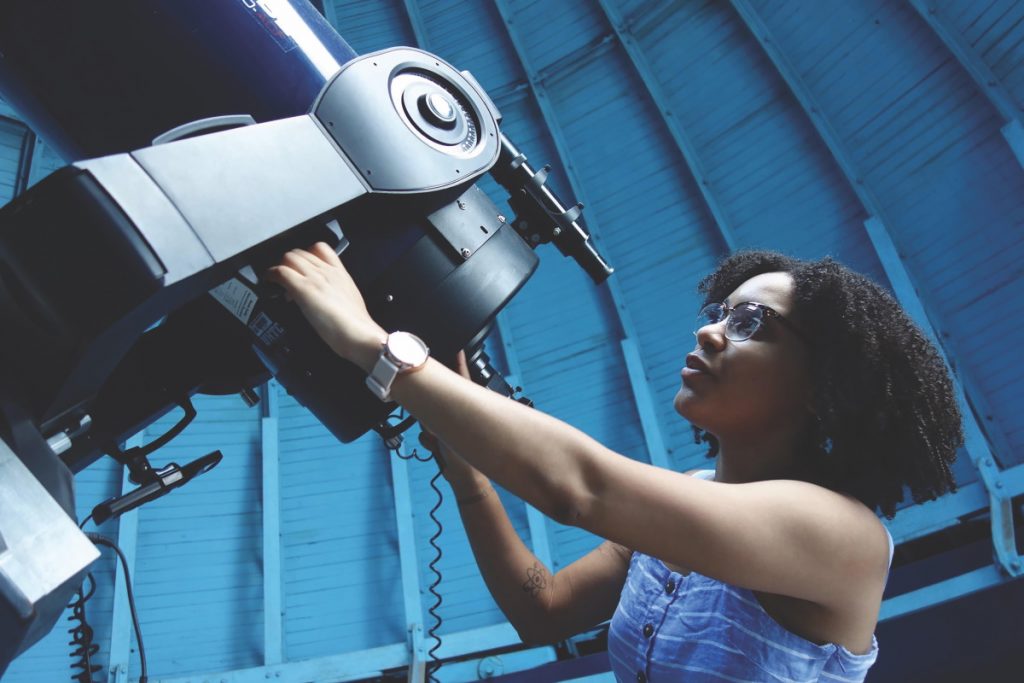Youth against racism

The United Nations’ International Day for the Elimination of Racial Discrimination takes place on the 21st March. It is a significant date. It was chosen because on this day, in 1960, police opened fire and killed 69 people at a peaceful demonstration against apartheid laws in Sharpeville, South Africa.
Since then, the apartheid system in South Africa has gone and laws that support racism have been abolished in many countries. But that doesn’t mean personal and systemic racism has disappeared. A fresh light was shone on the levels of racism in Britain, the US and internationally in 2020 with the growth of the Black Lives Matter movement, and as institutions, STEM practitioners and individuals, we all need to be aware of the effects of racism in our immediate environments and stand up to prejudice and intolerant attitudes.
This year the theme for the day is “Youth standing up against racism” in celebration of the many teenagers and twenty-somethings that stood up and led the way against racial injustice last year. The hashtag #FightRacism will be used across social media platforms.
At Futurum, we speak to a lot of STEM scientists and practitioners and time and again we hear stories of those really pushing to create diversity within their industries and through education, highlighting why it is so important. Below are some of the key articles.
Making Teaching as Inclusive as Possible
Dr Christina H. Paguyo and Dr Valentina Iturbe-Lagrave
A lack of diversity in social sciences has led to some major oversights in recent years. For instance, early facial recognition software did not recognise the faces of black people. “Even though these seemingly objective professions may appear to be neutral and solely technical, scientists and engineers can unintentionally create discriminatory infrastructures if they do not engage with Diversity, Equity and Inclusion,” says Dr Christina H. Paguyo.
Facilitating honest conversation and genuine self-reflection, Christina and Valentina’s inspiring work reminds us that we all have a role to play in making communities – including those in academia – more inclusive. We can learn together to succeed together.
Building Inclusivity into Astrophysic
Dr Rodolfo Montez Jr and Christine Crowlay
“We found that students in the Urban Louis Stokes Alliance for Minority Participation in STEM enriched our programmes by providing original research and unique perspectives, and participants helped support their peers too. This inspired me to begin the Latino Initiative Program, aimed specifically at local minority undergraduate students,” says Christine Crowley of the Smithsonian Astrophysical Observatory. She runs the Latino Initiative Program, an internship scheme that encourages undergraduates from under-represented backgrounds.
The National Astronomy Consortium
Moiya McTier, who is studying for her PhD in Astronomy at Columbia University, USA told us, “I was a National Astronomy Consortium student at the National Radio Astronomy Observatory in the summer of 2014. The NAC’s goal has always been to help students from under-represented groups thrive. The programme provides financial support for attending conferences and workshops and have connected me to influential people in both astronomy and science communication. This is all in addition to the professional development that I gained.”
“Good mentors don’t just try to recreate you in their image; they give you the tools necessary to achieve your own goals. I’d say that the NAC is the first time I was able to find that kind of good mentorship. I wouldn’t be where I am today without the NAC.”
Read more about this:
International Day for the Elimination of Racial Discrimination

